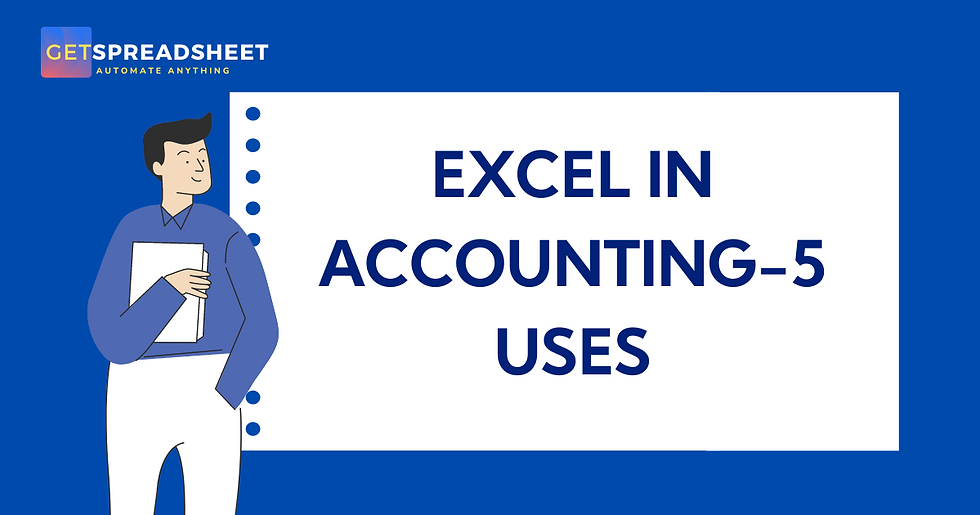EXCEL IN ACCOUNTING 5 USES
- GetSpreadsheet Expert
- Aug 2, 2023
- 2 min read
Excel is a primary accounting tool several small business entities or Individual's use. Its ability to quickly calculate complex mathematical operations and the large variety of functions, such as data sorting and analysis, makes it desirable. Accounting Activities like Budgeting and preparing an Income and Expenditure statement or a Balance sheet can be performed using Excel.

Here are some uses of Excel in Accounting:
BUDGETING:
One of the most essential features of Excel is to perform budgeting. Under budgeting, we estimate the amount of money we have to spend on our operations; the aim is to fix the optimum budget for the ventures so that the work is done efficiently. With the help of Excel formulas and functions, carrying out the task of budgeting has become significantly easier. By learning a few essential recipes and with Excel’s ability to calculate, anyone can make budgets using Excel, which is why it is widely used in small business organizations. Excel Also ships with several templates which can be used to create cash flow statements, Income and Expenditure statements, and Balance sheets. All of which are prerequisites for an organization.
DATA ANALYSIS
With the help of Excel, the results obtained from the accounting statements can be analyzed as Excel involves several data analysis tools that can perform heavy quantitative analysis of the results obtained. An organization can evaluate its performance when compared with its competitors or even with its performance from previous years. Data manipulation is helpful when dealing with masses and masses of data. Also, VLOOKUP or HLOOKUP can help search and identify the values.
DATA VISUALISATION:
The results obtained from bookkeeping can only be understood by the person performing such activities; to make it readable for a layman, Excel contains several charts through which the other people in the organization can interpret the results. Excel also helps in trend analysis through which future outcomes can be forecasted. The Excel spreadsheets are designed to contain data in a tabular format to accommodate appropriate bookkeeping.
EXTERNAL DATA:
One of the qualities of Excel is that the data can be obtained from any external software. The data can be acquired from any third-party software and used for accounting evaluation. E.g., the sales and purchase invoices can be pulled into a single worksheet, and accounting activities can be performed on them.
SPREADSHEETS:
Excel spreadsheets are developed to facilitate accounting activities. In Excel, the user can link multiple worksheets with one another while preparing statements. The balance of sheet one can be carried forward in the following sheet, and the results can relate to each other. Not only that but the format of the spreadsheets is designed to contain data in a tabular form which helps make the statements representable. The data is easy to navigate as well as manipulate in Excel.
Comments